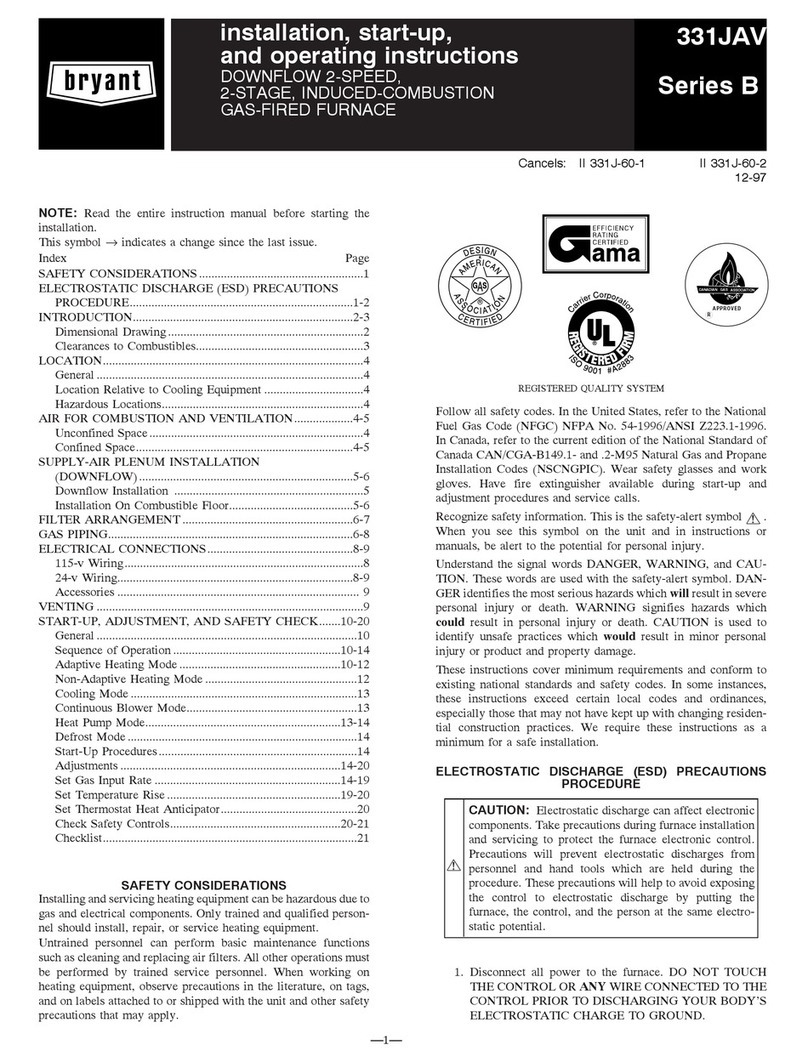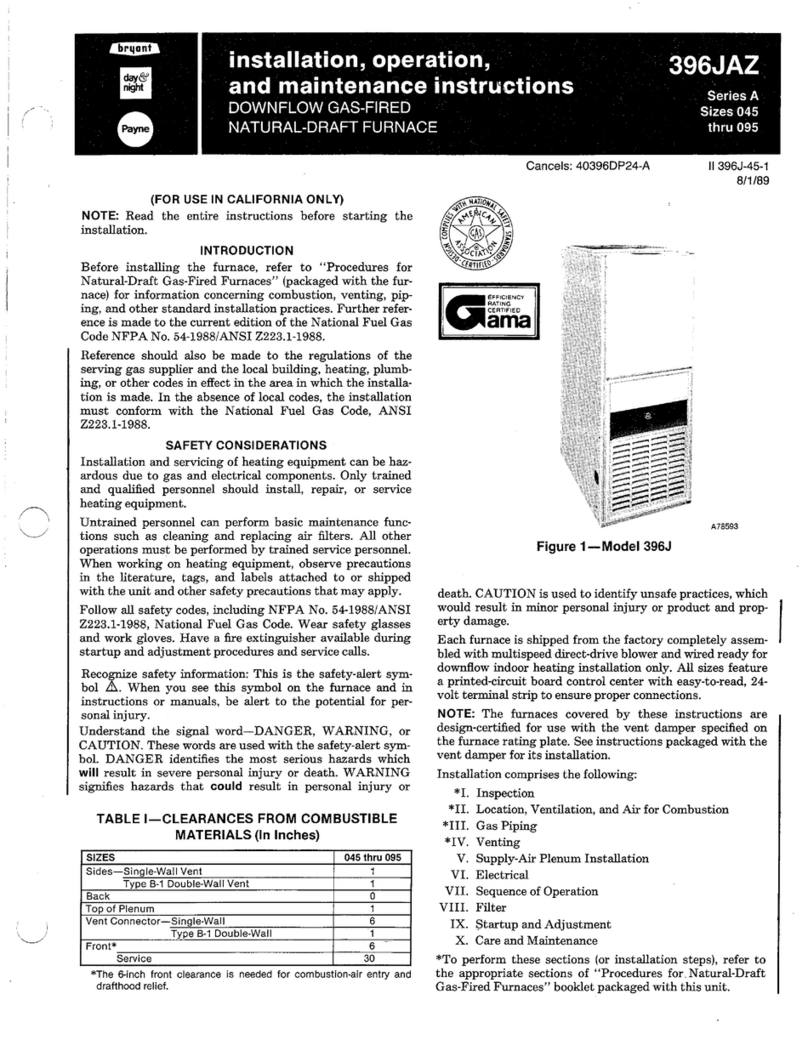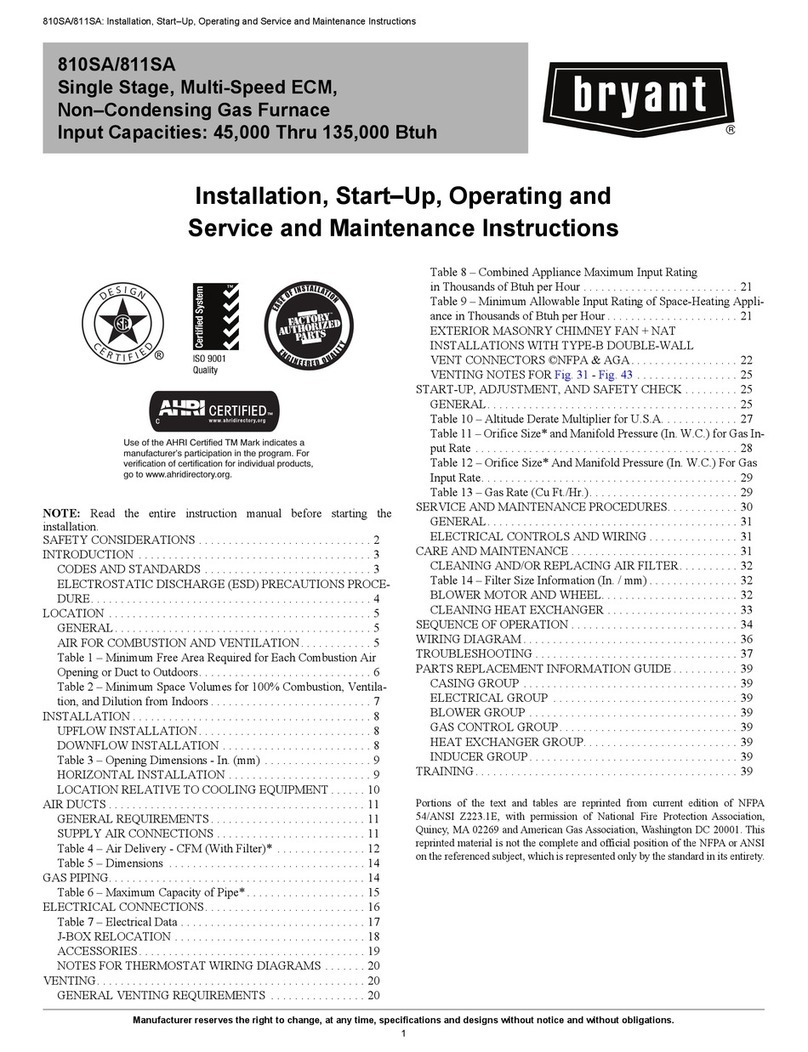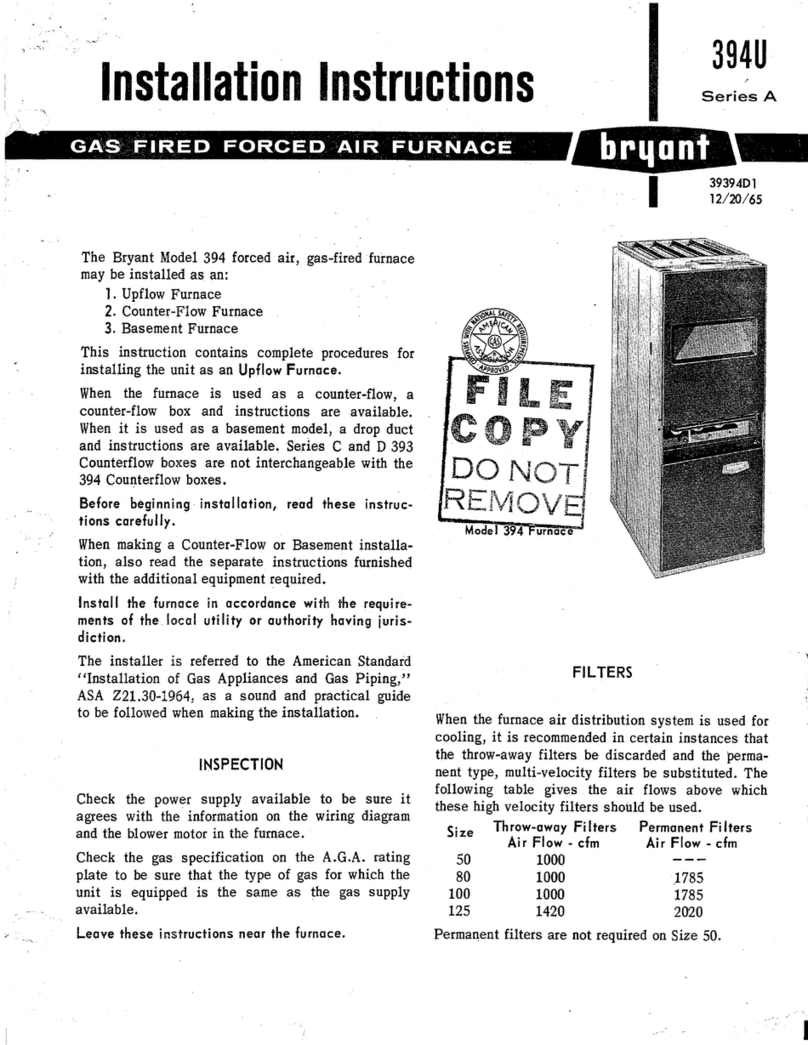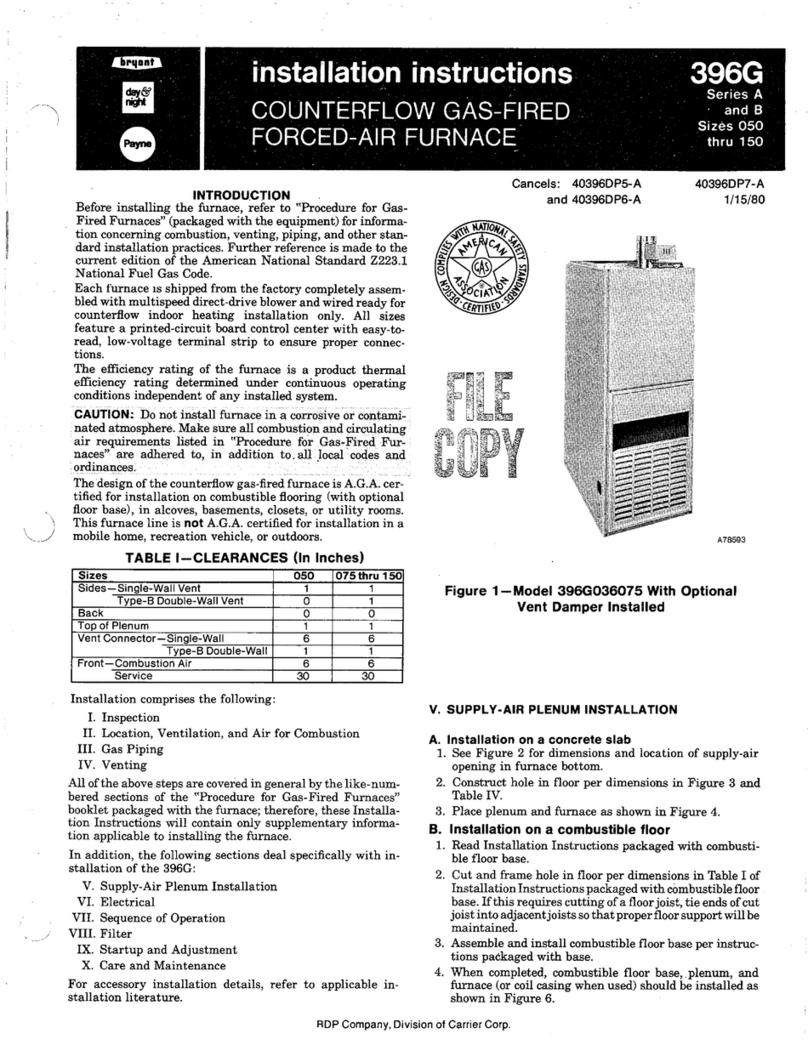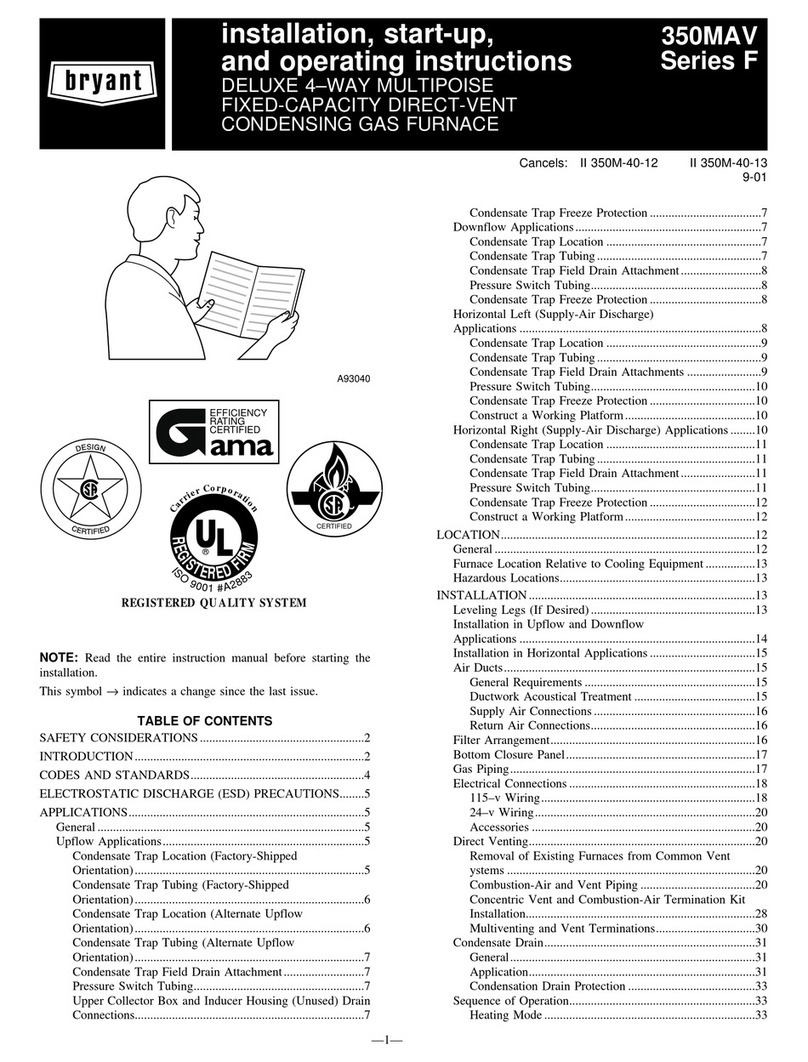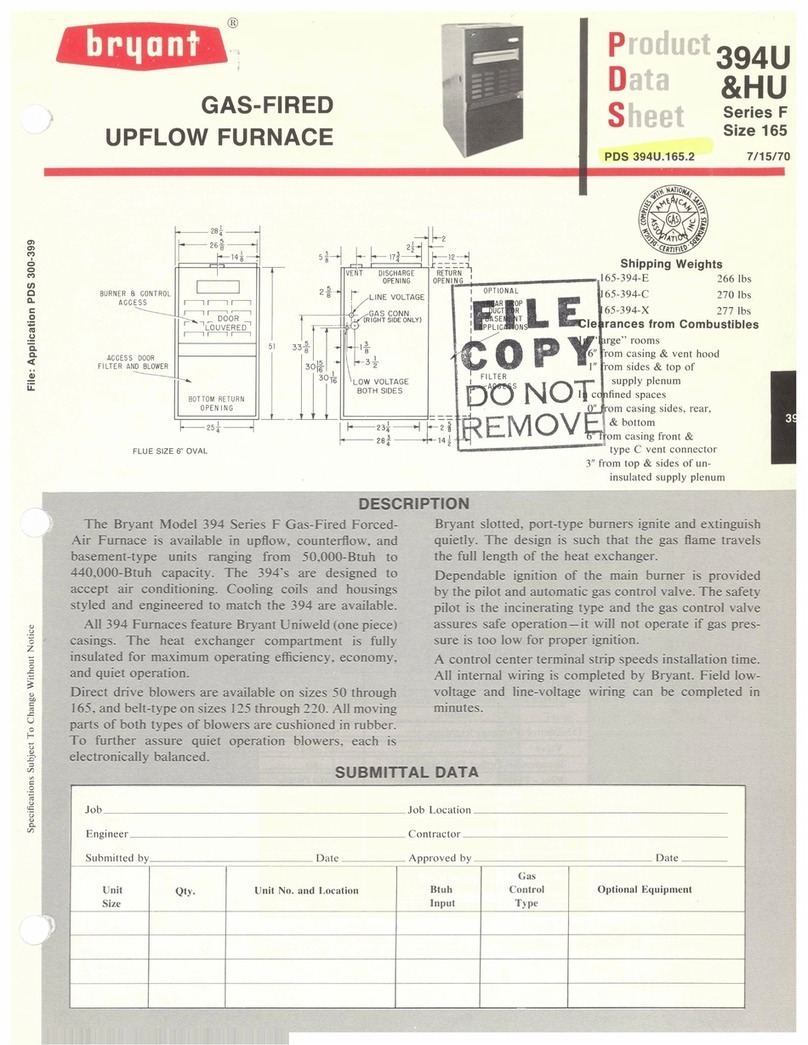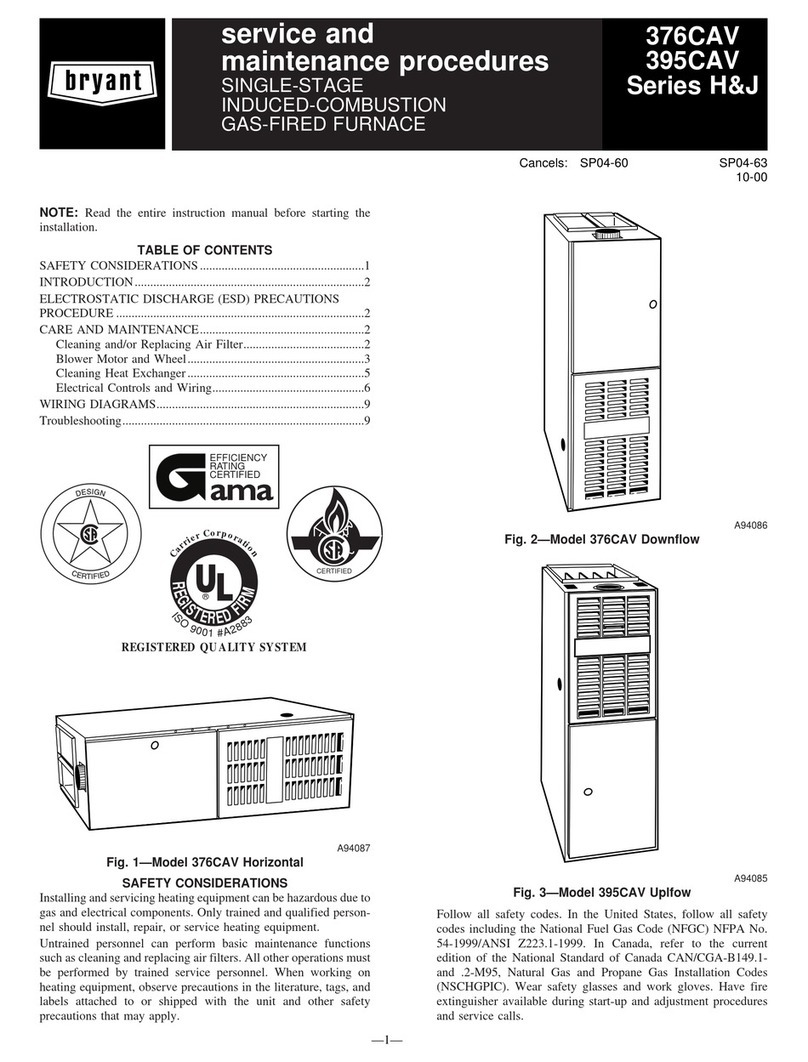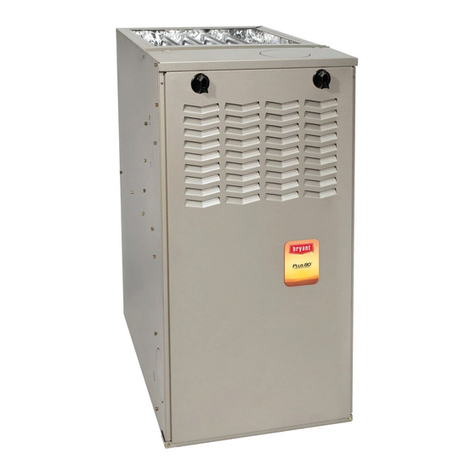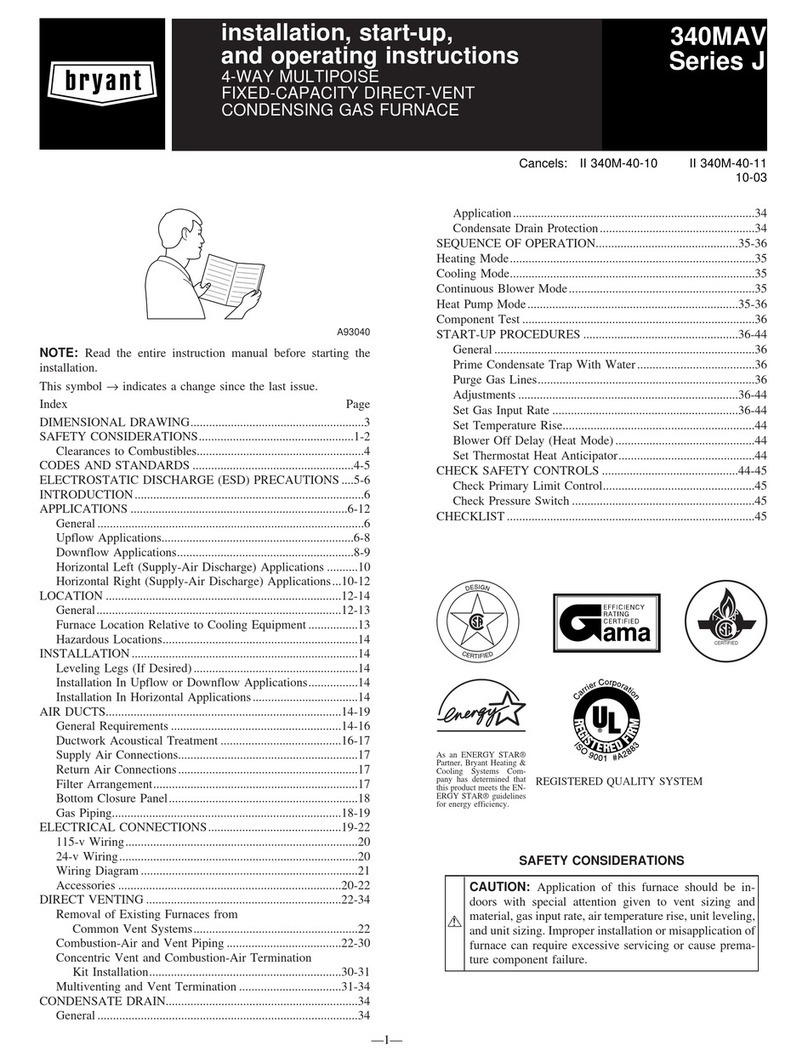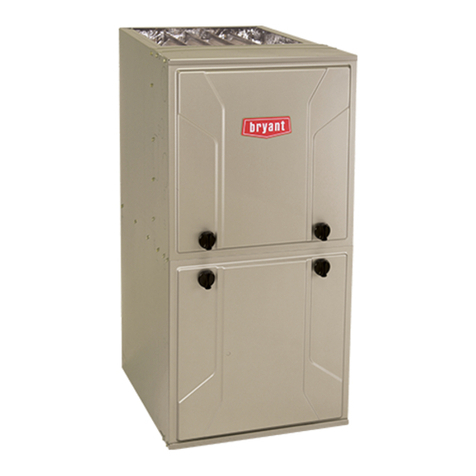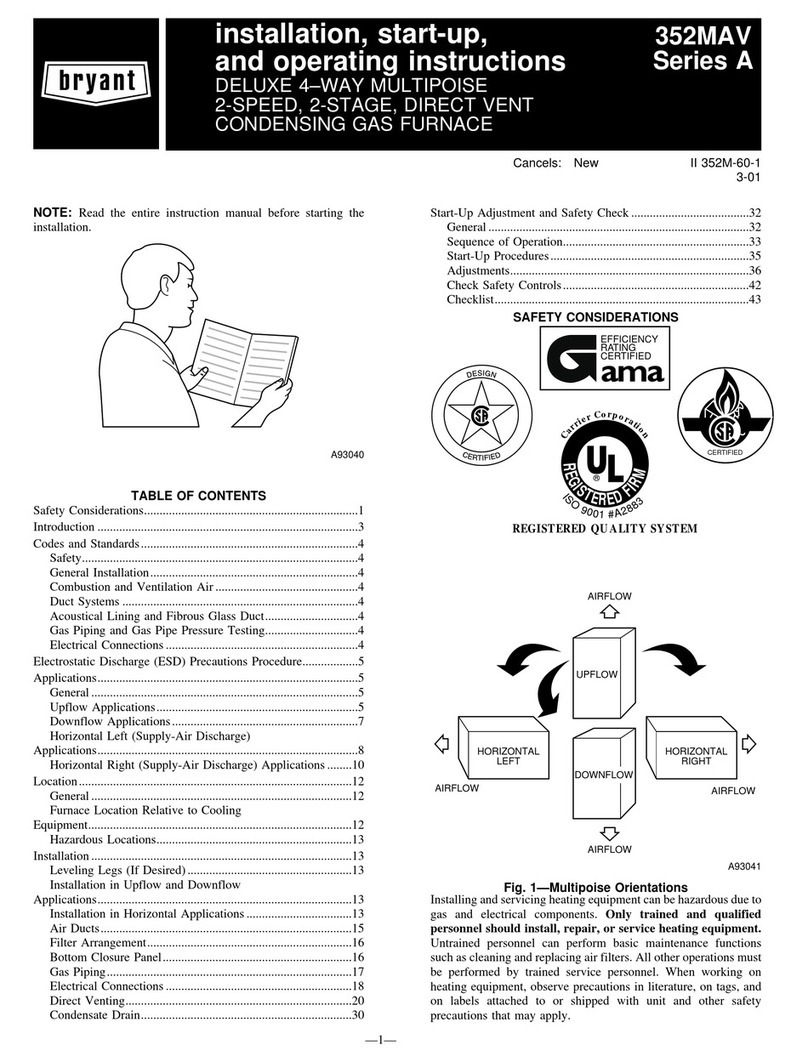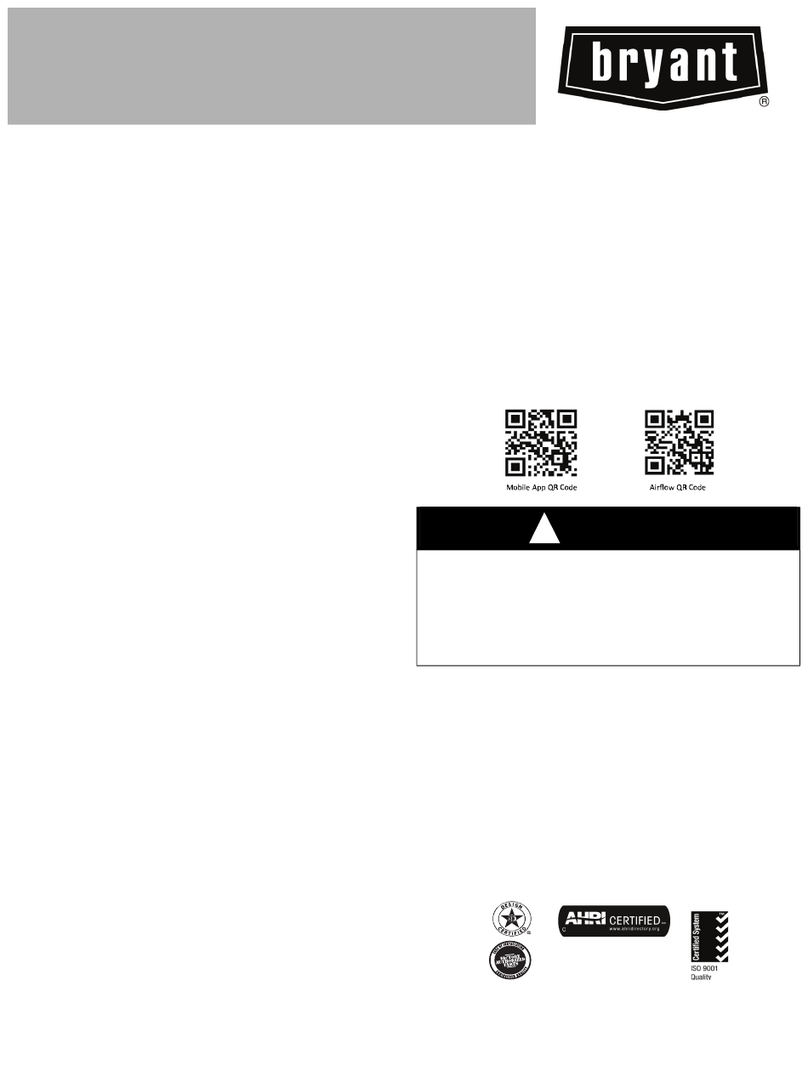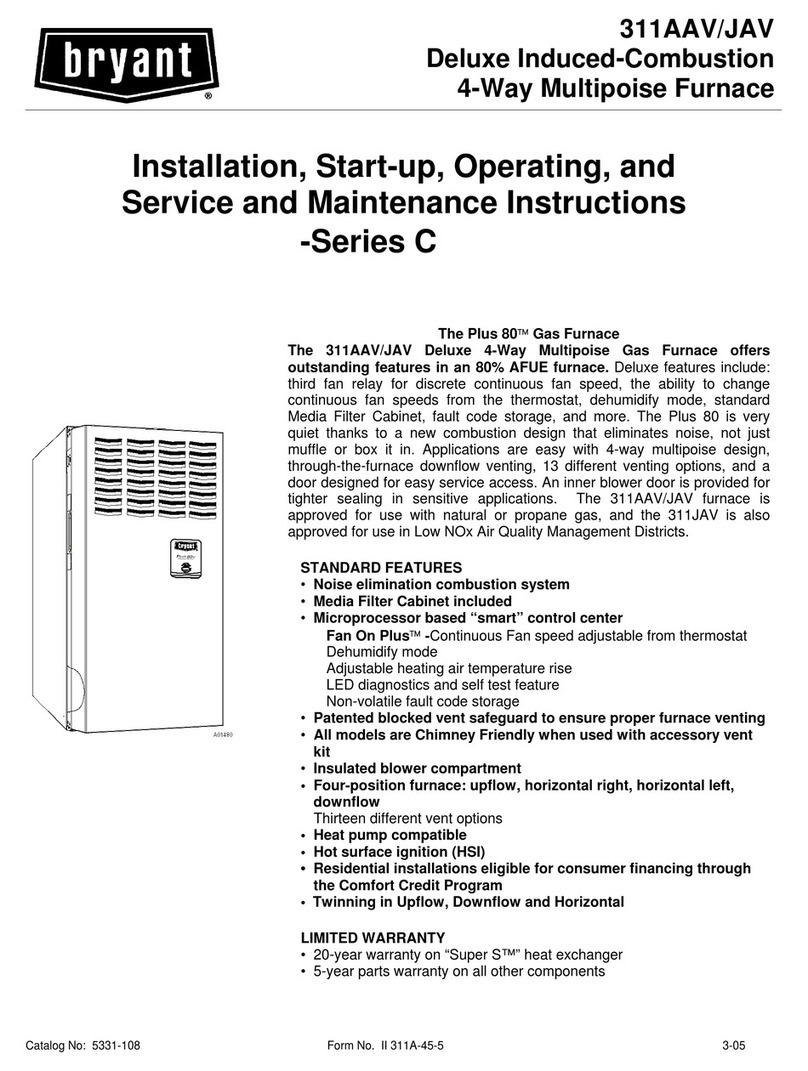
LOCATION
WARNING: This furnace is not water tight and is not designed for outdoor installation. This furnace shall be installed
in such a manner as to protect electrical components from water. Outdoor installation would lead to a hazardous electrical
condition and to premature furnace failure.
WARNING: Do not use this furnace as a construction heater. Use of this furnace as a construction heater exposes
furnace to abnormal conditions, contaminated combustion air, and lack of air filters. Failure to follow this warning can lead
to premature furnace failure and/or vent failure which could result in a fire hazard and/or bodily harm.
CAUTION: For an attic installation, it is important to keep insulation 12 in. or more away from any furnace openings.
Some types of insulating materials may be combustible.
This furnace is approved for reduced clearances to combustible construction. The 075–155 size units may be installed in a closet or similar
enclosure. It is also approved for attic installation. As this unit may be installed as an upflow or horizontal furnace, it may be located in a basement,
on the same level as the area heated, suspended, or in a crawlspace. In any case, unit should always be installed level.
In a basement or when installed on the floor (as in a crawlspace), it is recommended that unit be installed on a concrete pad that is 1 in. to 2 in.
thick.
When installed in the horizontal position, furnace may be suspended by using an angle iron frame, as long as total weight of both furnace and frame
are allowed for in support calculations. Other methods of suspending are acceptable.
The required minimum clearances for this furnace in all positions are specified in Table 1.
The furnace should be located as close as possible to chimney or vent in order to keep vent connections short and direct. The furnace should also
be located as near as possible to center of air distribution system.
PROCEDURE 1–AIR FOR COMBUSTION AND VENTILATION
WARNING: Installation of this furnace in an areas where it will receive contaminated combustion air must be avoided.
Such contamination would include the following: ammonia, chlorine, hydrogen sulfide, halogenated hydrocarbons, carbon
tetrachloride, cleaning solvents, hydrochloric acid, water softening chemicals, and similar chemicals. Failure to follow this
warning will lead to premature rusting of heat exchanger and possible premature furnace failure and/or vent failure which
could result in fire hazard and/or bodily harm.
This furnace should be installed in a location in which facilities for ventilation permit satisfactory combustion for oil, proper venting, and
maintenance of ambient temperature at safe limits under normal conditions of use. The location should not interfere with proper circulation of air
within the confined space. See NFPA-31 Section 1.5.
In addition to air needed for combustion, process air shall be provided as required for: cooling of equipment or material, controlling dew point,
heating, drying, oxidation or dilution, safety exhaust, and odor control.
In addition, to air needed for combustion, air shall be supplied for ventilation, including all air required for comfort and proper working conditions
for personnel.
The barometric draft regulator (included with furnace) shall be installed in same room or enclosure as furnace in such a manner as to prevent any
difference in pressure between regulator and combustion air requirements.
Air requirements for operation of exhaust fans, kitchen ventilation systems, clothes dryers, and fireplaces shall be considered in determining the
adequacy of a space to provide combustion air requirements.
In unconfined spaces in buildings of conventional frame, brick, or stone construction, infiltration MAY be adequate to provide air for combustion,
ventilation, and dilution of flue gasses. This determination must be made on an individual installation basis and must take into consideration the
overall volume of unconfined space, the number of windows and ventilation openings, the number of doors to the outside, internal doors which
can close off unconfined space, and overall tightness of building construction. Consideration must also be given to the amount of storage items
(furniture, boxes, etc.) within the unconfined space which takes away from air volume.
Many new buildings and homes (and older ones that have been weatherized) MUST be considered as being tight of construction, therefore,
infiltration will not be sufficient to supply necessary air for combustion and ventilation.
A building can be considered as being of tight construction when:
1. Walls and ceilings exposed to outside atmosphere have a continuous water vapor retarder with a rating of 1 perm or less with openings
gasketed or sealed, and/or
2. Weather-stripping has been added on operable windows and doors, and/or
3. Caulking or sealants are applied to areas such as joints around window and door frames; between sole plates and floors; between wall-ceiling
joints; between wall panels; at penetrations for plumbing, electrical, and fuel lines; and at other openings.
If combustion and ventilation air must be supplied to an unconfined space from outside; an opening with a FREE AREA of not less than 1 sq.
in. per 1000 Btuh of total input of all appliances within unconfined space (but not less than 100 sq. in.) must be provided. This opening must be
located such that it can not be blocked at any time.
Furnace sizes listed in table 2 may be installed in a closet or enclosure. Installer must provide 2 ventilation openings, with OPEN AREA as
dimensioned in Table 2, for combustion air. The openings should be located about 6 in. from top and bottom of enclosure at front of furnace.
—3—

